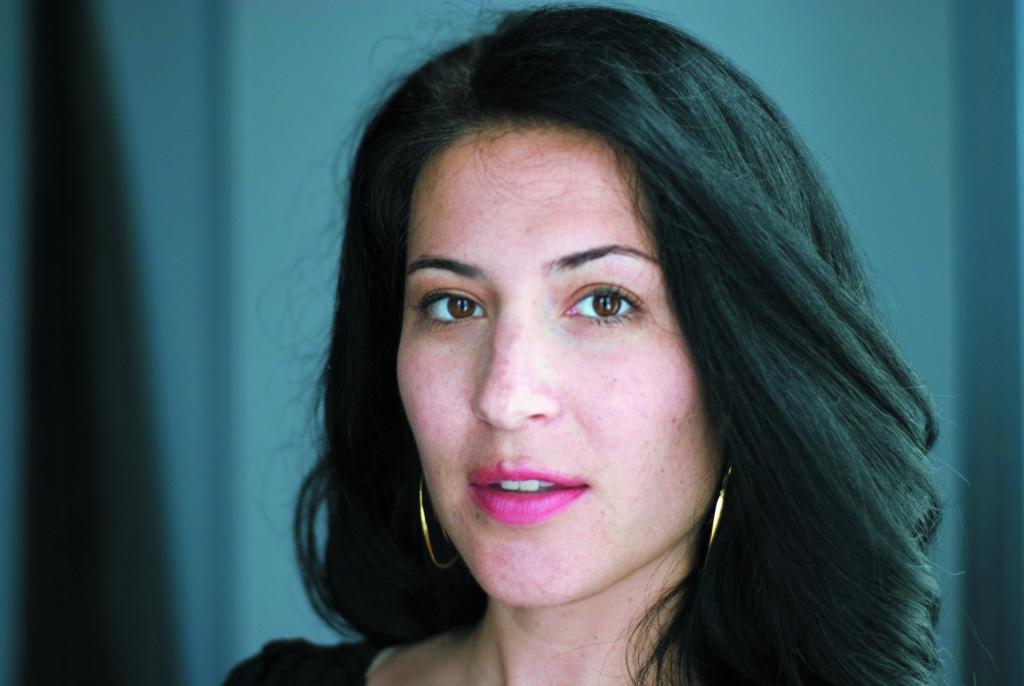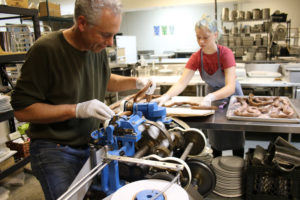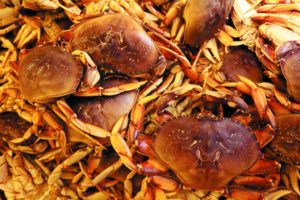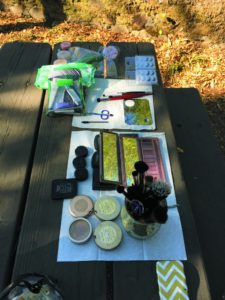Ready for some fun? Here are all the exciting events happening in or around Sonoma County this week. Over the weekend, enjoy some delicious crab at one of the many crab feeds happening around the county. On Saturday, support young musicians at a benefit concert starring teen bands in Sebastopol. And the Arlene Francis Center presents a festival of music featuring female leads. All this and more is in our list of things to do.
Saturday, Jan. 23
Boys & Girls Club Crab Feed: This Saturday, stuff yourself silly with a delicious crab dinner at the Brooks Road Club in Windsor. The event starts at 5:30 p.m., and proceeds from the $70 tickets benefit the Boys & Girls Club of Central Sonoma County. Find out all the details at bgccsc.org/crab.
For a full list of upcoming crab feeds, visit pd2go.net/CrabFeeds2016.
Saturday, Jan. 23
The Edge of Winter: The Arlene Francis Center is hosting an all-female front person showcase this Saturday, featuring 5 bands with female leads. The event goes from 7-11 p.m. and will not only include live music, but aerial fabrics, as well. Admission to this all-ages show is $10. Find out more at arlenefranciscenter.org.
Saturday, Jan. 23
Teen Town Youth in Music Benefit Concert: This Saturday, check out what the talented youth in our community are doing at an all-ages benefit concert to support the Teen Town Open-Mic Nights. From 3-10 p.m. at the Sebastopol Community Center, enjoy live performances by young artists and bands, and more. Admission is $10 for adults, $7 for youth 7-18, and free for kids 6 and under. Find out all the details at www.teentowntalent.com.
Sunday, Jan. 24
Winter Moms & Babies Clothing Swap: Unload your stash of unused clothes and accessories, trading them in for some new-to-you duds at this Sunday’s clothing swap geared at young families. This seasonal event is accepting and trading good quality items that include newborn-3T clothing, women’s clothing, small toys, books and more. The trading goes from 1-3 p.m. at the Santa Rosa Birth Center. For more details, visit facebook.com/swapitsonomacounty.
Other upcoming events:
Friday, Jan. 22
Marc-Andre Hamlin: Canadian pianist and composer. 7:30 p.m. Weill Hall, Green Music Center. $35 & up. gmc.sonoma.edu, 866-955-6040.
‘A Steady Rain’: Opens Friday; closes Feb. 6. Left Edge Theatre, Carston Cabaret, Wells Fargo Center. $30-$40. 546-3600, wellsfargocenterarts.org.
‘Astrological Oddities’: New Santa Rosa Junior College Planetarium show opens at 8 p.m. and runs weekends through Feb. 21. No shows Feb. 6-7. $5-$8. 527-4465, santarosa.edu/planetarium.
Ridgway: Bay Area hip-hop & reggae group tops five-band roster. 8 p.m. Phoenix Theater, Petaluma. $8. 762-3565, thephoenixtheater.com.
Yugi Boi: 18 year-old beat prodigy and Bay Area native. Charles the First & Gabriel Francisco open. 9 p.m. HopMonk Tavern, Sebastopol. $8. 829-7300, hopmonk.com
Saturday, Jan. 23
Latin Jazz: Eddie Palmieri Latin Jazz Band, Pete Escovedo Latin Jazz Orchestra. 7:30 p.m. Saturday. Weill Hall, Green Music Center. $40-$70. gmc.sonoma.edu. 866-965-6040.
‘Arrows into Infinity’: Documentary on jazz saxophonist Charles Lloyd. 8 p.m. Saturday. SHED Grange, Healdsburg. $12. healdsburgshed.com.
Jake Shimabukuro: Ukulele master. 8 p.m. Saturday. Uptown Theatre, Napa. $25-$65. 259-0123, uptowntheatrenapa.com.
Sonoma County Philharmonic: Conducted by Norman Gambona, with feature trombonist Bruce Chrisp. 7:30 p.m. Saturday.; 2 p.m. Sunday. Santa Rosa High School auditorium. $10-$15; 18 & under free. socophil.org.
Sunday, Jan. 24
‘Peter and the Wolf’: Santa Rosa Symphony performs Prokofiev’s classic, acted out onstage by the Platypus Theatre. 3 p.m. Sunday. Weill Hall, Green Music Center. $12-$127. gmc.sonoma.edu, 866-955-6040.
Charles Lloyd & Bill Frisell: Live jazz saxophone and guitar concert. First stop in a new tour. 6:30 p.m. Sunday. SHED Grange, Healdsburg. $75. healdsburgshed.com.
Wood Brothers: Brothers Chris and Oliver Wood, plus Jano Rix, play the blues and more. Liz Vice opens at 8:30 p.m. Sunday. Mystic Theatre, Petaluma. $26-$31. 765-2121, mystictheatre.com.
‘Hick in the Hood’: One-man play written and performed by San Francisco film & TV actor Michael Sommers. 3 p.m. Sunday.. Occidental Center for the Arts. $15. 874-9392, occidentalcenterthearts.org.
Monday, Jan. 25
‘It’s Football, Charlie Brown’: Original ‘Peanuts’ comic strips on display daily except Tuesday. Ends July 25. Schulz Museum, Santa Rosa. $5-$10; children 3 and under free. 579-4452, schulzmuseum.org.
Tuesday, Jan. 26
‘Napa Restaurant Week’: 20 restaurants offer $20 lunches, $36-$46 dinners. Jan. 24-31. opentable.com.
Wednesday, Jan. 27
Wellington International Ukulele Orchestra: 8 p.m. Wednesday. Wells Fargo Center for the Arts, Santa Rosa. $29-$49. 546-3600, wellsfargocenterarts.org.
Thursday, Jan. 28
‘Between Nature & Technology’: Exhibit features animation, sound, sculpture & photography by Courtney Eagan & David Sullivan. Wendesday through Sunday until March 6. Sonoma Valley Museum of Art, Sonoma. $5; 12 and under free. 939-7862, svma.org.
Friday, Jan. 29
Trio Celeste: Chamber music. 7:30 p.m. Jan. 29. Newman Auditorium, Santa Rosa Junior College. $15-$26. 415-392-4400, cityboxoffice.com.
‘Brighton Beach Memoirs’: Raven Players production of Neil Simon’s comedy opens at 8 p.m. Jan. 29. Closes Feb. 14. Raven Theater, Healdsburg. $10-$25. 433-6335, raventheater.org.
‘DJ Vendetta’: Dance music. 8 p.m. Jan. 29. Phoenix Theater, Petaluma. $5. 762-3565, thephoenixtheater.com.
Tommy Thomsen: Western swing musician holds his own public birthday party. 8:30 p.m. Jan. 29. Rossi’s 1906, Sonoma. $10. 343-0044, rossis1906.com.
Saturday, Jan. 30
Sebastopol Guitar Festival: Concerts, talks, demos, displays. Noon-10 p.m. Jan. 30. Sebastopol Community Cultural Center. $28-$45. 823-1511, seb.org.
Mendocino Wine & Crab Festival: No crab yet this season, but the fest goes on, with lots of clams, mussels and shrimp. Cioppino dinner seatings at 4:30, 6 & 8 p.m. Jan. 29 at Pentecost Hall in Fort Bragg. $15-$40. Fest continues noon-3 p.m. Jan. 30 at Big White Tent, Main & Spruce, Fort Bragg. $85. mendocinocoastclinics.org/crab_wine.php.
Steel Pulse: California Roots presents long-time favorite reggae band. 8:30 p.m. Jan. 30. Mystic Theatre, Petaluma. 765-2121, mystictheatre.com.
‘Scottish Folk’: Alan Reid & Rob van Sante. 8 p.m. Jan. 30. Occidental Center for the Arts, Occidental. $20. 874-9392, occidentalcenterforthearts.com
Beso Negro: Gypsy Swing, plus Junk Parlor, DJ Malarkey. 8 p.m. Jan. 30. HopMonk Tavern, Sebastopol. $12-$15. 829-7300, hopmonk.com.
Feast of the Olive: 19 chefs, five courses and three menus. 6-10 p.m. Jan. 30. Ramekinds , Sonoma. $175. 996-1090, olivefestival.com.
Sunday, Jan. 31
Jubilee Klezmer Ensemble: Traditional Jewish and Israeli dance music quartet with a touch of jazz. 3-5 p.m. Jan. 31. Occidental Center for the Arts, Occidental. $10-$12; 12 & under free. 874-9392, occidentalcenterforthearts.com.
Ratebeer Best Beer Festival: 40 brewers from around the world pour their best. Kaiser Air Inc. near Sonoma County Airport, Santa Rosa. 2-6 p.m. Jan. 31. $75. Ticket sales end Jan. 25. ratebeerbest.com.
David Cross: ‘Todd Margaret’ TV series star. 7:30 p.m. Jan. 31. Wells Fargo Center. $35. 546-3600, wellsfargocenterarts.org.
Robert Huw Morgan: Stanford University’s official organist. 3 p.m. Jan. 31. Schroeder Hall, Green Music Center. $30. gmc.sonoma.edu, 866-955-6040.






















